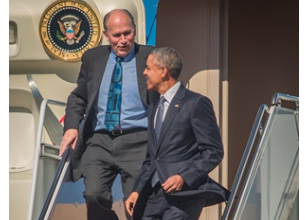By WIN GRUENING
SENIOR CONTRIBUTOR
“When the Boomers Bail, A Community Economic Survival Guide” is the title of a book by Mark Lautman.
Although written in 2011, it has begun receiving more attention recently as “baby boomers” began retiring in ever increasing numbers.
With over three decades of experience in professional economic development, Lautman is widely credited with recognizing the impending new economic paradigm in communities across the nation caused by shifting demographics, our country’s lack of a properly educated workforce and the competition among communities to attract a sufficient supply of qualified talent to fill needed jobs.
By happenstance, Lautman met with local Juneau resident, Bruce Denton, on a sailboat trip in the Caribbean last year. The two had attended high school together in the Seattle area but had not connected since their graduation. During their visit, Denton learned about Lautman’s book and his background and wondered if Lautman would be willing to come to Juneau.
Denton was so impressed after reading Lautman’s book that he bought 100 copies and began distributing them around Juneau asking people to read the book and then share it with a friend. He personally numbered every book and tracked where each copy went.
Eventually, the details were worked out and Lautman visited Juneau this last week – appearing in several different venues explaining his message how communities can continue to prosper in the coming decade and beyond.
Mark Lautman’s message turns conventional wisdom on its head. He believes that almost everything that he and other economic development specialists have learned over the course of their careers will be almost useless in the coming decades.
Lautman paints a picture that is, frankly, scary. The situation he describes is imminent and irreversible and potentially catastrophic for communities that ignore the warning signs.
According to Lautman, this is due to several factors. The “baby boomer” generation didn’t have enough kids, the birth rate continues to decline, people are living longer, and our educational system is not preparing students with the skills needed to work in the changing economy.
As our population ages and becomes more dependent, there will be fewer and fewer qualified workers to replace those that retire. Functionally, we will reach “full employment” but with many jobs left unfilled.
The nature of jobs is changing. Advances in technology, robotics and artificial intelligence will demand technical skills and complex reasoning processes that aren’t emphasized in our schools today. Many of the manufacturing and retail jobs in our economy today will disappear and the workers who held them will not have the requisite skills for other available jobs.
Eventually, a relatively small proportion of our population will be employed trying to support the unemployed, the unemployable, and those who are too young or too old or who choose not to work.
Qualified workers will be in such demand that they will decide what jobs they want and where they will work. Communities and companies will compete for jobs and qualified workers. Some communities will win and prosper. Others will fail.
The power held by civic leaders to attract a company or an industry to locate in their community will vanish. It will be the existing or future employees who will decide where the jobs will locate and where economic development will occur.
What does this all mean for our community?
First, we need to decide whether we want to be a “winner” or a “loser” in the new economy. Lautman says to be a “winner”, we will need to grow our economy faster than our population for us to flourish. When an economy grows slower than the population it serves, there will be more people every year and fewer and fewer resources to support them.
It follows, then, we should determine what our future population will be and then calculate how many “economic base jobs” will be needed to support that population—jobs that export goods and services and import wealth.
From there, a community-wide assessment is needed to identify in what sectors those jobs could reasonably be found. The important part of this exercise will be to catalog the assets and obstacles impacting our ability to get those jobs – including all the important features necessary to attract future employees to live in Juneau.
It is necessary the process involve all stakeholders in the community and agreement reached on all steps along the way. The result should be a comprehensive economic plan for our community that is specific, measurable, and has broad community support.
Our local assembly must make this a high-priority topic at their next retreat. Lauter’s best advice: “Grab all the economic base jobs you can.”
This exercise won’t be easy and requires vision, optimism, and compromise. But the alternative is unacceptable.
Win Gruening retired as the senior vice president in charge of business banking for Key Bank in 2012. He was born and raised in Juneau and graduated from the U.S. Air Force Academy in 1970. He is active in community affairs as a 30-plus year member of Juneau Downtown Rotary Club and has been involved in various local and statewide organizations.




